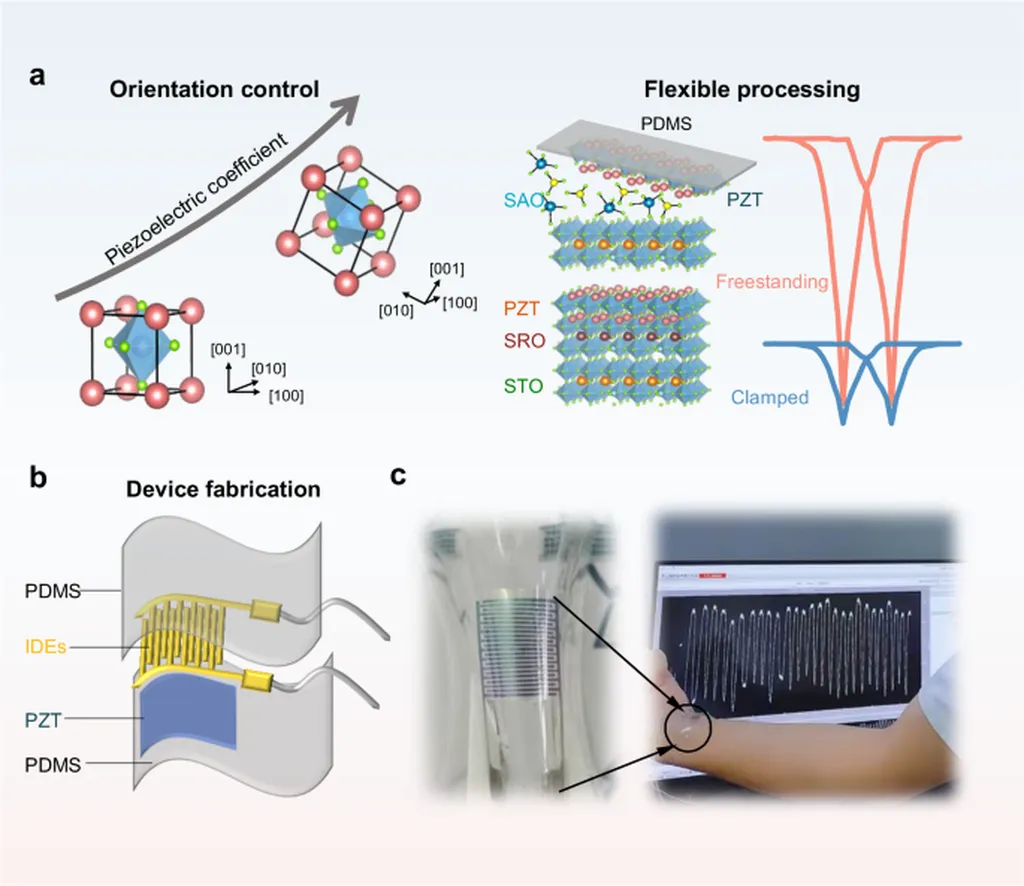In the world of advanced materials, a recent study has shed new light on the enigmatic properties of a compound that could revolutionize the energy sector. Co2FeSi, a Heusler alloy, has long been touted as a half-metallic ferromagnet and a Weyl semimetal, but its full potential has remained shrouded in controversy due to the complex interplay of electronic interactions. Now, a team of researchers led by Weinan Zhou from the Research Center for Magnetic and Spintronic Materials (CMSM) at the National Institute for Materials Science (NIMS) in Japan has taken a significant step towards unraveling this mystery.
The study, published in the journal *Science and Technology of Advanced Materials* (which translates to *Advanced Materials Science and Technology*), focuses on the anomalous Nernst effect and anisotropic magnetoresistance (AMR) in Co2FeSi thin films. The anomalous Nernst effect, a phenomenon where a transverse voltage is generated in response to a longitudinal temperature gradient in the presence of magnetization, is of particular interest for energy harvesting applications.
“We measured the anomalous Nernst conductivity (αxy) and AMR effect of Co2FeSi thin films from low temperatures up to room temperature,” explains Zhou. “Our measurements revealed that αxy is less than 0.1 A m−1 K−1 at room temperature and decreases slightly with temperature. This is more than one order of magnitude smaller than previous predictions unless a small but finite on-site Coulomb interaction at the Co site (UCo) is considered.”
The on-site Coulomb interaction, a measure of the electron-electron repulsion within an atom, plays a crucial role in determining the electronic structure and transport properties of materials. In the case of Co2FeSi, the appropriate value of UCo has been a subject of debate. By combining their experimental observations with first-principles calculations, Zhou and his team estimated that the suitable UCo value is approximately 1–2 eV.
The implications of this research are far-reaching, particularly for the energy sector. The anomalous Nernst effect has the potential to be harnessed for waste heat recovery, a process that could significantly improve energy efficiency in various industries. “Understanding and controlling the anomalous Nernst effect in materials like Co2FeSi could pave the way for more efficient energy harvesting technologies,” says Zhou.
Moreover, the study’s findings highlight the importance of accurately incorporating electronic interactions in theoretical models. This insight could guide future research in the design and development of advanced materials for a wide range of applications, from spintronics to thermoelectrics.
As the world continues to grapple with energy challenges, research like this offers a glimmer of hope. By unraveling the complexities of materials like Co2FeSi, scientists are not only expanding our fundamental understanding of physics but also laying the groundwork for innovative technologies that could shape the future of the energy sector.

